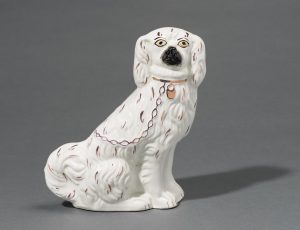Elaine Wormser began collecting nineteenth- and twentieth- century ceramic dog figurines before the commission of her Joseph Urban-designed bedroom. Accommodating this collection must have been one of the stipulations of Urban’s job. Though not accounted for in Urban’s preliminary sketch for the room’s design, its presence injects an aspect of Elaine’s personality and interests into the room. This spaniel is like those originally positioned atop the bookcases on either side of the bed.
Typically, modernist objects filled out interiors by Urban, but in this instance, the designer demonstrated that modern interiors could accommodate a range of objects—even antiques. This may have been an encouraging sign for those interested in modern interiors but still attached to objects created in another era and style.

Spaniel
England (Staffordshire), late 19th-early 20th century
Earthenware
Museum Purchase: Irene Boswell Buhr Fund
2020.40a
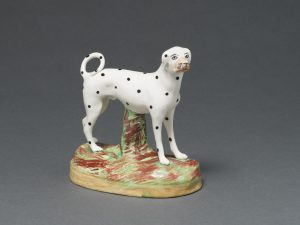
Dalmatian
circa 1880
Kent & Parr (English, 1880-1894)
earthenware
Museum Purchase: Irene Boswell Buhr Fund
2019.181
More than twenty ceramic pups, nestled into niches or atop shelves, are observed in archival photographs of the Wormser Bedroom. This dalmatian matches the figurine that sat on the lowest shelf of the bookcase near the bed. Like many of the dogs in Elaine’s collection, it was made in one of the industrial potteries in Staffordshire, England. At the potteries, dogs and other types of figures were made from inexpensive earthenware. Mass-produced, they were formed in molds and quickly decorated to minimize manufacturing costs. These affordable figurines became popular decorations in English and American homes during the Victorian era and have remained collectible through today.
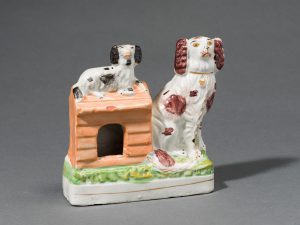
Dog House with Two Comforter Dogs
England (Staffordshire), 1880s
Earthenware
Gift of Mr. and Mrs. Clyde Abbott
1973.251
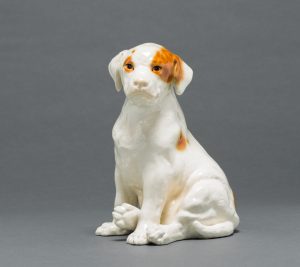
Dog
1920s
Wiener Kunstkeramische Werkstätte, (Austrian, 1908-1940)
earthenware
Anonymous loan
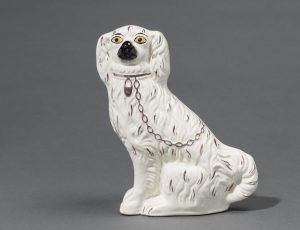
Spaniel
England (Staffordshire), late 19th-early 20th century
Earthenware
Museum Purchase: Irene Boswell Buhr Fund
2020.40b
Ceramic figurines like this were made during the late nineteenth- and early twentieth-centuries in English and Scottish potteries. Of these, dogs, particularly spaniels, were popular. Typically created in pairs, spaniels like these were often displayed on mantelpieces and were known as hearth spaniels or fireplace dogs. In the Wormser Bedroom, a pair of spaniels were displayed atop the bookcases, viewed at height like a fireplace mantel.
Although they were quickly and cheaply mass-produced, figurines like this were decorated by hand at the potteries. Thus, each is different in expression, some appearing at peace while others seeming haughty or fierce.
